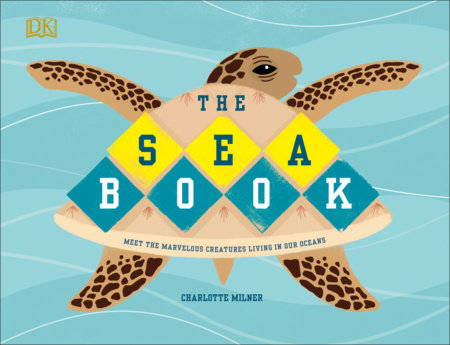Read It, Make It: Books and a Craft for Ocean Lovers
by Patricia J. Murphy
There’s nothing like hitting the beach to put your toes in the ocean, soak up the sun, collect shells, and play in the waves. To honor the ocean’s magic, I’ve compiled a short list of books to transport you through Earth’s vast waterways and learn how to care for them. You’ll also find a family-friendly craft to recreate the ocean’s glorious waves!
-
Read It!
These titles will help you celebrate the wonders of water and the ocean — and learn how to take care of them, too!
-
Hey, Water!
Available from:Hey, Water! invites readers to play watery hide-and-seek with an adorable girl as their guide. Zoe leads the way through a series of vignettes that explore water in all its shapes, states, and forms. With each watery reveal, early readers can soak up the gorgeous illustrations and matching labels, while older readers can drink in the higher-level text and explore the back matter. It’s perfect for introducing children to the wonders of water and the need to conserve this precious resource.
Also available from: -
The Sea Book
Available from:Get your goggles and flippers ready because this book will make you want to dive right into the ocean and explore! This beautifully written and illustrated book is a non-fiction travel guide to the sea and the creatures living there. Readers will also learn how the ocean is changing and how to keep it healthy and plastic-free. This includes stopping the use of plastic bags by making your own cloth shopping bags with old t-shirts. Warning: This book may create future oceanographers, marine biologists, and environmentalists. Read it with The Bee Book and learn how to save the seas and bees!
Also available from: -
Rocket Says Clean Up!
Available from:In this follow-up title to Rocket Says Look Up!, science lover and adventure-seeker, Rocket, explores the beautiful waters of Hawaii and finds trash on the beach! She also discovers turtles and other animals affected by plastic pollution. Saddened by these things, Rocket and her grandfather ask fellow beach-goers to help clean up the beach and save the ocean. Hopeful in tone, Rocket’s environmental initiative will touch readers' hearts and encourage all of us to do our part.
Also available from:
-
Make It!
Try your hand at making some waves with this ocean-inspired craft!

What You’ll Need:
- A small, clear glass jar or plastic container with lids you can secure
- Water: Enough to fill the container ½ to ⅔ full.
- Canola or vegetable oil. (Lighter oil color works better because Yellow + Blue = Green.) Amount: Enough to fill the rest of the jar or container
- Blue food coloring: One to two drops. (The more drops, the darker the ocean — but you may not see the currents as well if you go really dark)
- A funnel to pour the oil into the jar. (Not necessary, but helpful!)
How To Make an Ocean in a Jar:
Step 1. Assemble all of your materials and clear space to create.
Step 2. Clean out a small glass bottle or container to use for your ocean in a jar.
Step 3. Fill the bottle or container ½ to ⅔ full with water. (We prefer ⅔ for more space to see the interaction between the water/oil and the “ocean currents.”)
Step 4. Put one drop of blue food coloring in the water. This will make it easier to see what’s going on. Stir the water with a spoon or put the jar’s lid on and shake.
Step 5. Fill the rest of the jar with oil. Leave a little room at the top for air. Put the top on the jar and fasten it. (Taping the lid to the jar can prevent leaks, but it’s not foolproof.)
Step 6. Turn the jar on its side and slosh back and forth to make waves! Also, try turning the jar upside down. (Remember, the blue dye can stain anything it touches, so take precautions. Doing this outdoors on a patch of grass is a good idea.)

Keep the Fun Going
Experiment with different-sized jars with varying amounts of water, oil, and color. Talk to your kids about what they notice and why they think it happens. Explore the science behind emulsion to answer their questions.
Clean Up Safely
Once you finish making waves, let the water and oil settle. Scoop/funnel the oil back into the oil container and keep it for other science experiments, etc. You can safely dispose of the colored water in your sink. If you don’t want to keep the oil, contact your local recycling center to find the best way to dispose of it so as not to hurt sewer systems, waterways, and animals.



